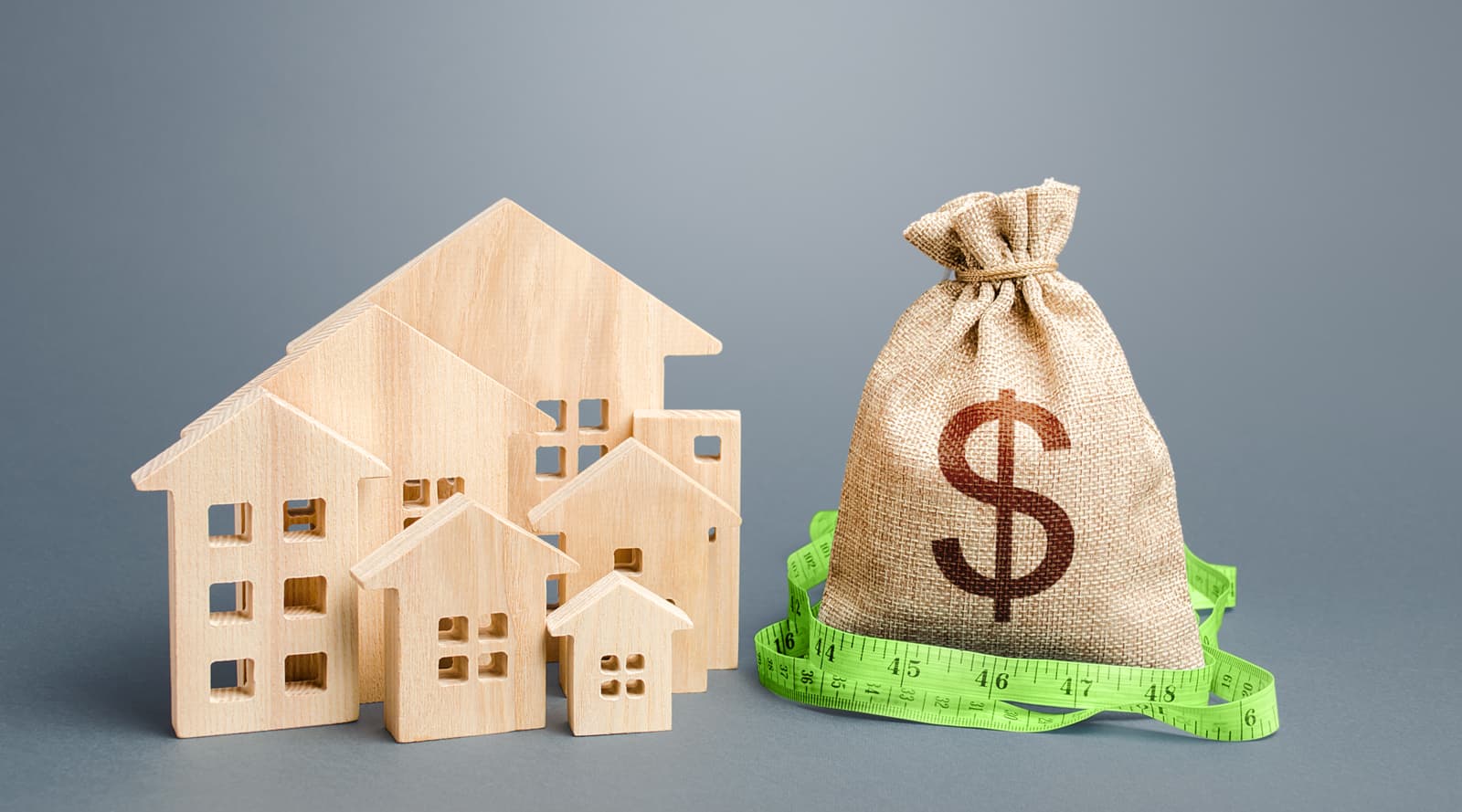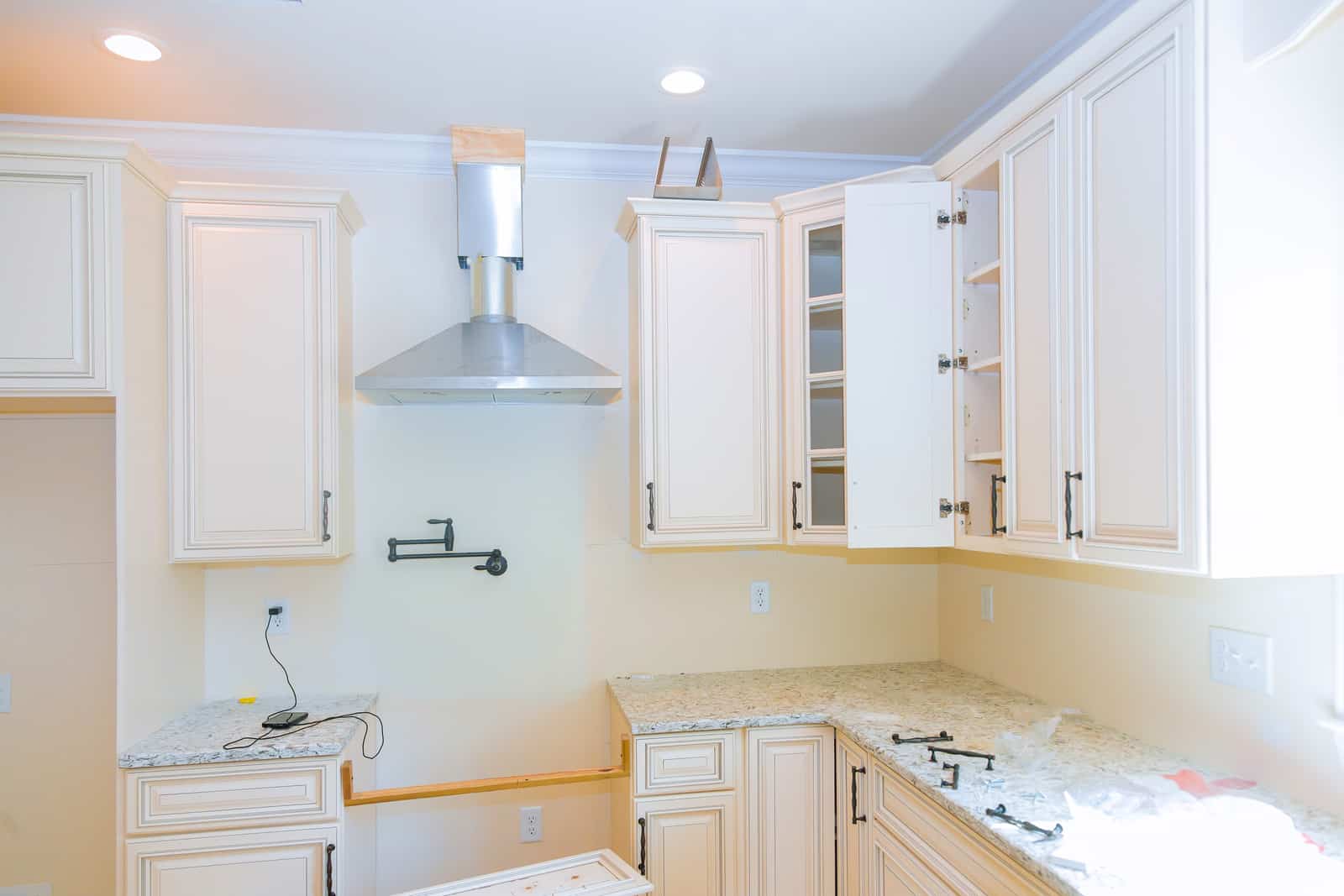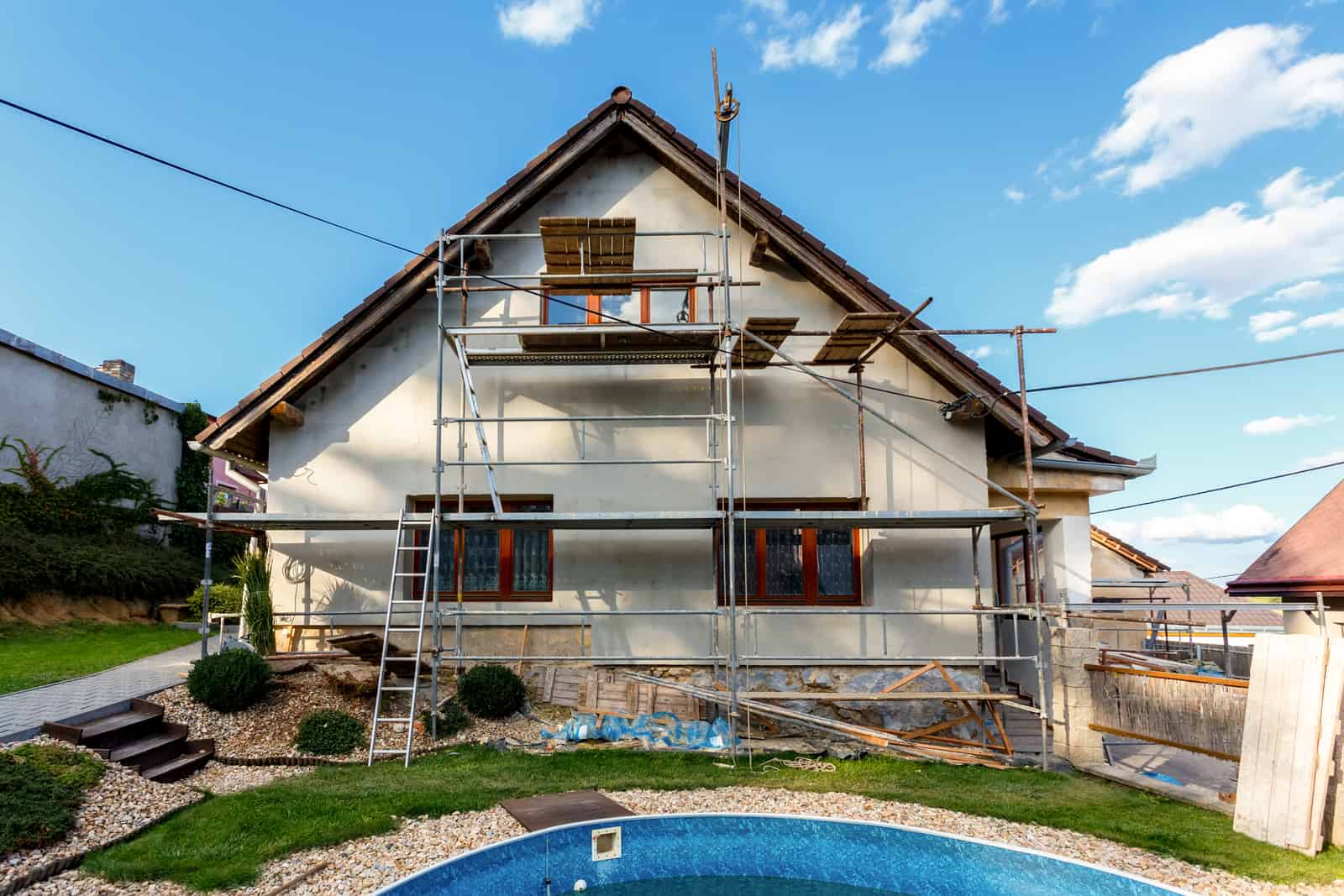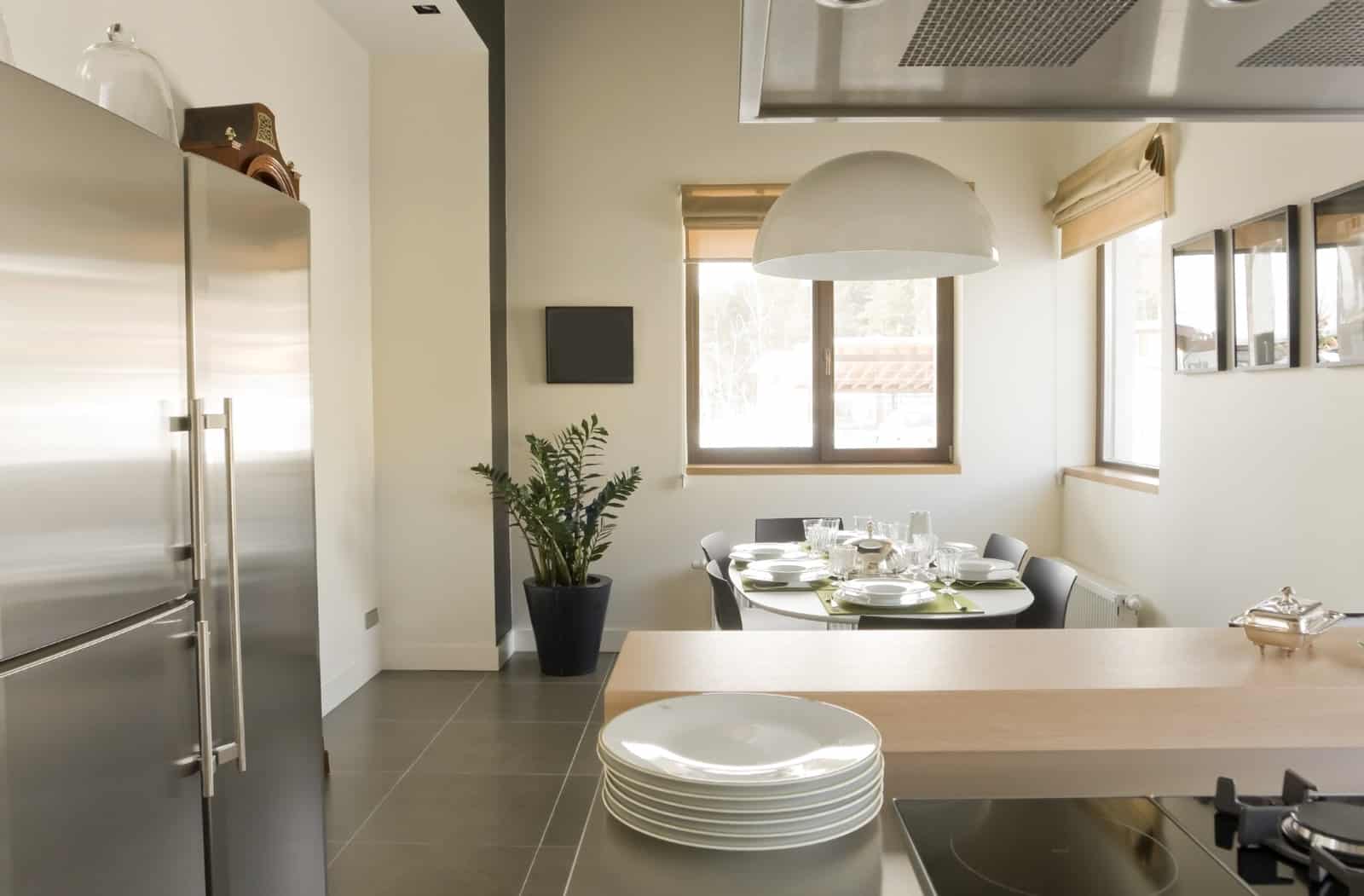
Do you need a home renovation loan to complete a big project in your home? Whether you want to finish a basement, overhaul your kitchen, or add a whole new section, any major home improvement project requires significant money.
That doesn’t mean you have to pay for everything in cash, though. Renovation loans can help you realize your dreams much sooner than it would take to save tens of thousands of dollars.
Can You Afford to Renovate Your Home?

Before getting into the details of your renovation, it’s necessary to assess your budget and timeline. Do you want to start the project in the next few weeks? Could you wait a year to begin? If your timing is flexible, you might choose to spend a few extra months saving money or improving your and a co-signer’s credit scores before seeking out a home renovation loan.
It’s also important to stay realistic about what you can afford. Whether you want to work with a contractor or do it yourself, be sure to research how much similar projects in your area tend to cost. Be sure to factor in potential surprises and, if you’re DIYing, the cost of materials, tools and tool rentals.
Should You Renovate Your Home Using Financing/Credit?
Home renovations can add a substantial amount of curb appeal to your house, but also they can quickly get expensive. If you don’t have enough cash savings, financing your home improvement plans with a home renovation loan can bridge the gap. These loans are meant to give you additional funds to renovate your house rather than build a new one.
Some loans can even help you build back borrowed equity with property improvements.
Types of Financing
With an accurate estimate for your project in mind, you can next consider your financing options.
Refinancing Mortgages

If you’d prefer to avoid loans for your remodeling project, you can refinance your existing mortgage instead. While technically it is a loan, refinancing replaces your old loan with a new loan. For that, you have two options:
1. A cash-out refinance is a way to get thousands of dollars right away. This option taps into your home’s equity — the value of the home minus what you still owe on it. This gives you a new loan with a higher outstanding balance than you previously owed, and you get the difference between these loans in cash. If current interest rates are lower than what you pay now, a cash-out refinance makes lots of sense.
Pros:
- Lower interest rates: Refinancing your loan usually involves a lower rate of interest than a Home Equity Line of Credit (HELOC), discussed below. This type of financing may offer the lowest rates available to you out of all those discussed here.
- Debt consolidation: If you have funds left after the reno, you can pay off high-interest credit cards and save thousands on interest.
- Higher credit scores: Paying off your cards with a cash-out refinance can improve credit scores by reducing your credit utilization ratio. Improved credit means a greater likelihood of qualifying for future loans.
Cons:
- Foreclosure risk: When your home is the collateral, you risk losing it if you don’t make payments. A cash-out refinance specifically to tackle credit card debt is generally considered a bad move for this reason.
- New terms: Your new improvement loan will have different terms from the original one. Make sure you know the new interest rate before agreeing to anything.
- Closing costs: You’ll have expenses for a new appraisal, plus other closing costs. Typically, you pay up to 5 percent of the improvement loan; that’s $10,000 for a $200,000 home.
- PMI: You will need private mortgage insurance if you borrow more than 80 percent of your home’s value.
Loan Terms: The amount of time depends. For example, with a rate-and-term refinance on a 30-year contract, you could lower your rate, change to a 15-year payout, or both — nothing else besides the rate and time changes.
2. In contrast, traditional refinancing replaces your existing lien with a new one for the same balance but at a different interest rate. You aren’t pulling cash out with this type of refi, so this is not typically used for funding a remodel.
Home Improvement Loans/Unsecured Personal Loan
A home improvement loan is a type of unsecured personal loan used to pay for home upgrades and improvements. These lenders of renovation loans offer up to $100,000 at varying rates depending on your credit worthiness; interest rates can range from 6 to 36 percent. Unlike with lines of credit, you must repay these loans and most construction loans monthly.
Pros:
- No risk of losing your home: Because you don’t use your home as collateral for these kinds of loans, you won’t lose anything besides points to your credit score should you default on the loan.
- Funding is typically fast: Most lenders pay in just one or two days. A home appraisal isn’t required. Applying online takes only a few minutes.
- Fixed monthly payments: Like any personal loan, an improvement loan has fixed payments that you can reliably budget for.
- Allows co-signers: Adding someone with a stronger credit score can reduce your annual percentage rate (APR) on renovation loans.
- Easier to qualify: Borrowers with lower minimum credit scores may qualify for this type of financing, although interest rates may be adjusted upward accordingly to offset the lender’s risk.
Cons:
- High interest rates: Unsecured loans come with higher interest rates than other forms of credit.
- No tax benefits: You can’t claim personal loan interest as a tax deduction like you may be able to with other loans.
- Low loan amount: Some lenders will only give you up to $40,000. Consider another option if your improvements will cost more than that.
Loan Term: These loans have variable repayment terms. Beware of choosing a longer schedule, though; you’ll get lower monthly payments but pay more interest over the life of the loan.
Home Equity Loans

Sometimes referred to as second mortgages, home equity loans can supplement your savings for property improvements. Lenders typically require you to have a loan-to-value ratio below 80 percent, which means you need to have paid at least 20 percent of the home’s value. If your home’s total value is $200,000, you must have already put $40,000 into your loan.
You receive equity loans as a lump sum of cash. Just like when you bought the house, you may need to pay an additional series of closing costs, including loan-processing fees and more. Be prepared to pay up to a further 5 percent.
As a lump-sum draw, this type of loan is a reliable choice for one-time expenses and critical projects. In fact, a lender likely won’t even give you less than $25,000.
Pros:
- Fixed monthly payment: Typically, these loans have a fixed interest rate, so you know what to expect every month.
- Tax deductible: Interest paid on this type of home renovation loan may be tax deductible. Check with your CPA.
- Appraisal optional: An appraisal may not be required, saving you that expense.
Cons:
- Additional payment: Paying back this loan is in addition to your normal monthly payments for your first mortgage.
- It’s a gamble: If property values in your area decline, tapping into your equity can work against you.
Loan Term: Terms can range anywhere from five to 30 years.
Home Equity Lines of Credit (HELOCs)

Like home equity loans, HELOCs borrow against your home equity. However, a HELOC is more like a credit card than it is a traditional loan: You get a certain amount of money to borrow and pay back, but you don’t have to take it all as a single lump sum. Further, you only pay interest on what you draw.
HELOCs typically have a lower interest rate than equity loans, but the rate is adjustable. An adjustable rate can rise or fall at any time, which changes your monthly payment along with it. A lender may let you convert some of what you owe on your HELOC into a fixed rate.
Pros:
- Potentially lower interest: Interest compounds only on what you draw, not the total amount available.
- Interest-only payments: You may have the flexibility of only making interest-only payments during the draw period.
- Tax deductible: Interest paid on this type of loan may be tax deductible. Check with your CPA.
- Appraisal optional: An appraisal may not be required, saving you that expense.
Cons:
- Interest can rise: Rising rates can raise your monthly obligations.
- Overspending is possible: Without financial discipline, you could overspend and owe large payments on top of your usual obligations.
Loan Term: HELOCs are generally available for 10 years and allow up to 20 years to repay.
Government Loans
Government loans, such as Fannie Mae HomeStyle or FHA 203(k), can also supplement your savings.
Fannie Mae’s HomeStyle loan is a single-close loan that includes the cost of home repairs in the overall amount. These home renovation loans are designed for repairs that an appraiser demands, for changes a homeowner wishes to make, or for paying for cosmetic repairs.
Pros:
- One payment: Construction costs are bundled into your mortgage payment.
- Insurance not necessarily required: If you have more than 20 percent equity in your property, you can cancel the mortgage insurance.
- Non-restrictive: Investment properties and vacation homes qualify for Fannie Mae support. You can also use these funds for any type of remodel, including luxury updates.
Cons:
- No starting from scratch: You can’t tear down and reconstruct a house with a Fannie Mae loan. You can only renovate existing properties.
- Stricter criteria: It’s harder to qualify without a good credit score and a low debt-to-income ratio.
- Construction plan: You must submit your reno plans for approval before closing the loan.
- Longer wait time: It usually takes longer to close than buying a house because of the extra steps involved.
Loan Term: Fannie Mae loans are available for 15 or 30 years at a fixed or adjustable rate.
FHA 203(k) government loans are similar to Fannie Mae’s but are less restrictive about credit scores. Of course, this is usually the more expensive of the two government-backed home renovation loan options. FHA mortgages typically have higher insurance premiums for borrowers with smaller down payments.
Pros:
- Smaller down payments: You can pay as little as 3.5 percent instead of 20 percent.
- More relaxed criteria: It’s easier to qualify for these loans with lower credit scores and income.
- Larger tax deduction: You can claim the renovation and purchase interest.
- Combined payment: These lower-interest loans combine into one monthly payment.
Cons:
- Primary residences only: You can’t renovate a vacation home with an FHA loan.
- Insurance required: Although you can roll the costs into the loan, insurance is still required.
- DIY work not allowed: You must hire a licensed and insured contractor.
- More paperwork: More work can mean it takes longer to receive your money.
Loan Term: The terms can vary heavily depending on your state and circumstances. Expect anywhere between 1 and 30 years.
Credit Cards

For smaller projects where taking out entire loans or a cash-out refinance makes less sense, you might instead consider using cards to fund the project. Many cards have low-to-no interest rates for a few months after purchase; if it’s a project you can afford to pay off in a couple of weeks, you might avoid paying any interest at all.
Pros:
- Best for small projects: Low interest means you can pay it back immediately and avoid the unnecessary costs from a longer repayment plan.
- Rewards: If you have a rewards card, spending a large sum of money can earn you lots of points.
Cons:
- Can’t deduct the cost: At a certain point, however, it makes more sense, from a tax perspective, to seek out a lender. If the project threatens to cost more than $10,000, consider a more conventional home renovation loan instead.
- May Not Be Accepted: Not every contractor accepts credit cards for payment, so this may not be an option with your chosen contractor.
Loan Term: This is up to you; how long will it take you to pay back your credit card debt?

Renovating your home is an exciting undertaking, but it also involves some very serious questions about your money, the future value of your home, your monthly payment obligations and other important questions.
Carefully consider if you can afford the additional payments you will be required to make each month if you choose financing rather than paying cash for your remodeling project. Is your income high enough to support the added burden of a new home renovation loan? Don’t depend on your lender to stop you from borrowing too much money. Their job is to make loans, not make sure you have enough money to run your life. While loan guidelines are in place to prevent lending a borrower more than they can afford, just think back to the last mortgage crisis when millions of homeowners were foreclosed because they couldn’t afford their loan payments.
How much additional value will the project add to your home? Most renovation projects do not add 100% of the cost to the value of your home. In other words, you likely will not recoup the full cost of the reno when you sell the house.
To realize the full value from your investment, renovations are for you as the homeowner to enjoy by using the upgrade personally, not from selling the upgrade to a new owner. Be sure the expense will be worth the added enjoyment you get from your home.
For your next remodeling project in the Metro Atlanta area contact us, Halcyon Remodeling. Transform your kitchen, bathroom, basement, backyard or any part of your home.
We have flexible and affordable financing available through GreenSky, or you can use one of the other financing sources discussed above.
When you are ready to get started, contact us for a free estimate.
